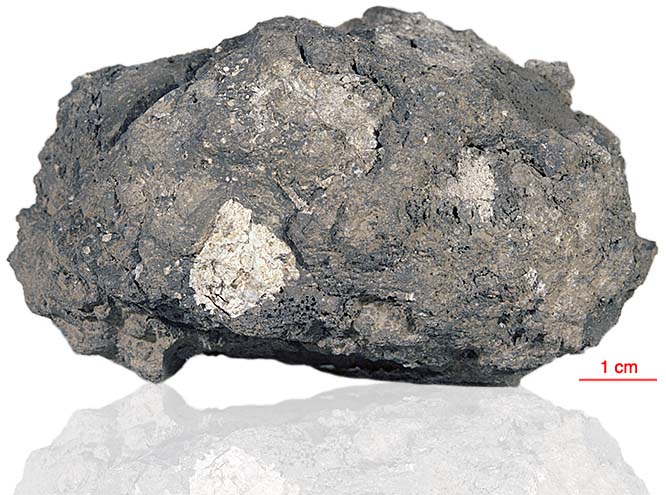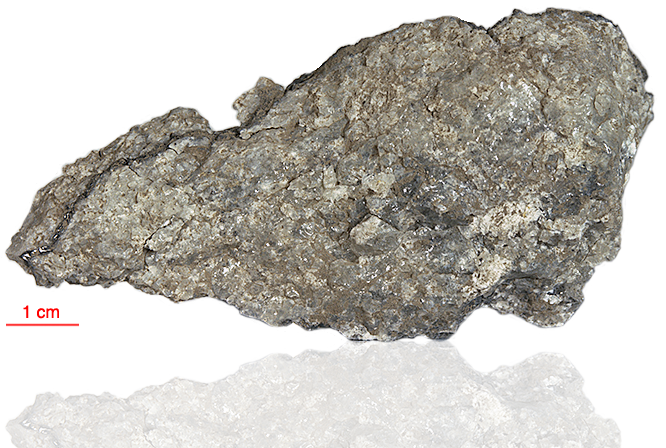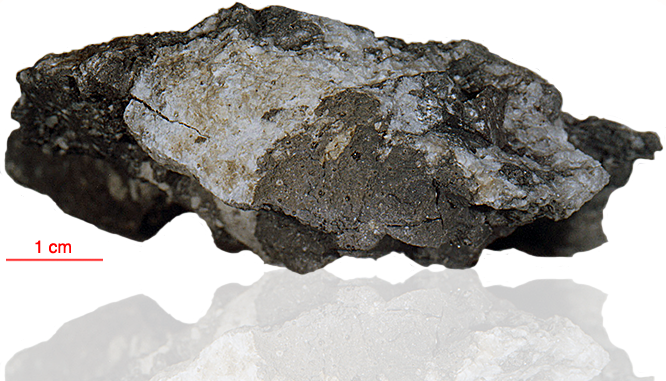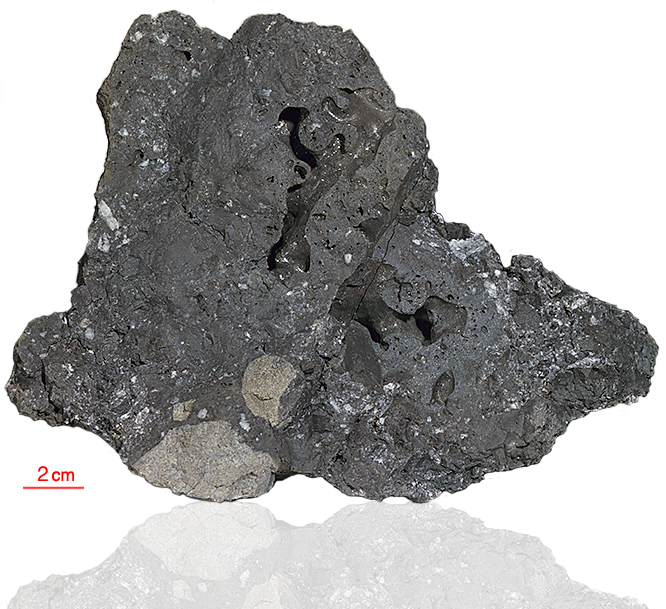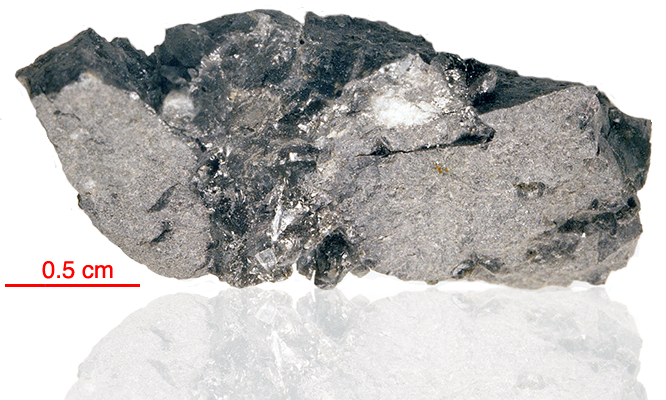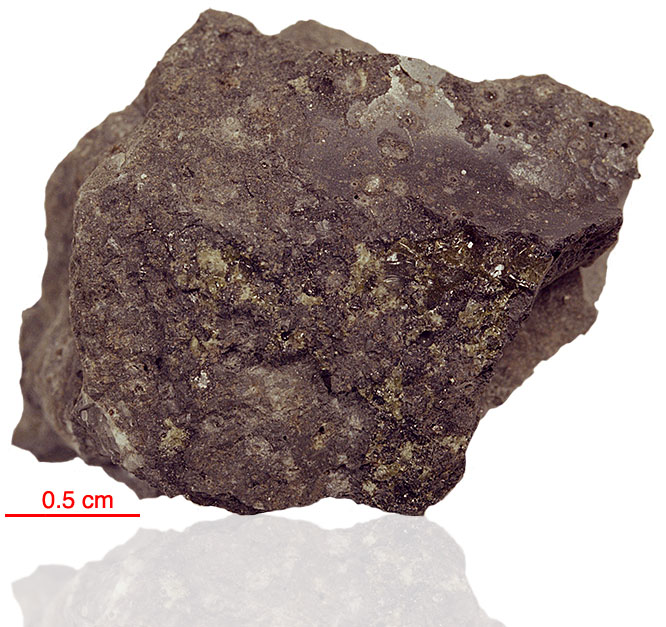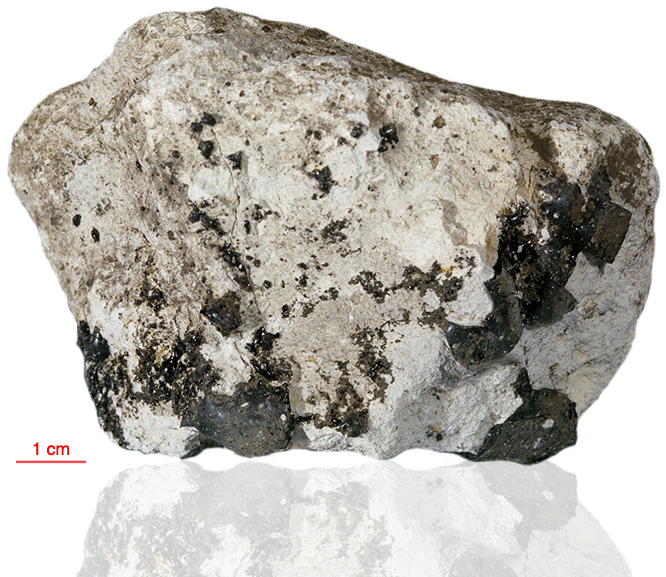
Fact sheet
65315 is a chemically pristine lunar anorthosite that has been crushed, but not highly shocked. It had a black glass coating on one side that has broken off during meteorite bombardment. Relic plagioclase grains are up to 4 mm long. The only mafic mineral reported is pyroxene which is uncommon but found at grain boundaries. All grains exhibit undulose extinction (due to shock) but shock melting and/or recrystallization is not observed.
The sample weighed 300 grams before analysis and has not been successfully dated.
Our thin section is slightly thick so between crossed polars some plagioclase crystals are yellow instead of shades of grey.
Further details of this and other Apollo samples are here: http://curator.jsc.nasa.gov/lunar/
The Apollo 16 landing site was in the hilly region around Descartes crater in the lunar highlands. The landing spot was chosen to allow the astronauts to gather geologically older lunar material (Descartes Formation and the Cayley Formation) than the samples obtained in the first four landings, which were in or near lunar maria.
The mission lasted 11.1 days, with a stay on the lunar surface of 71 hours. The crew were on the lunar surface for 20.2 hours during which they traversed approximately 27 kilometers and collected approximately 96 kilograms of samples.
Apollo 16 was launched on 16 April 1972.

